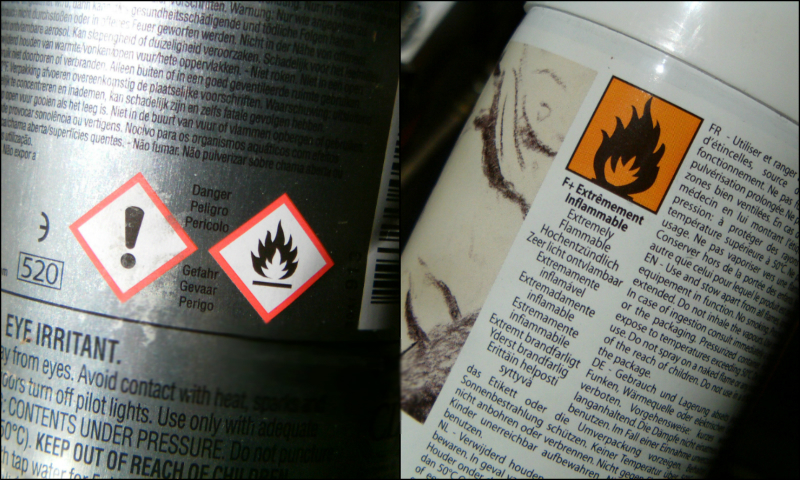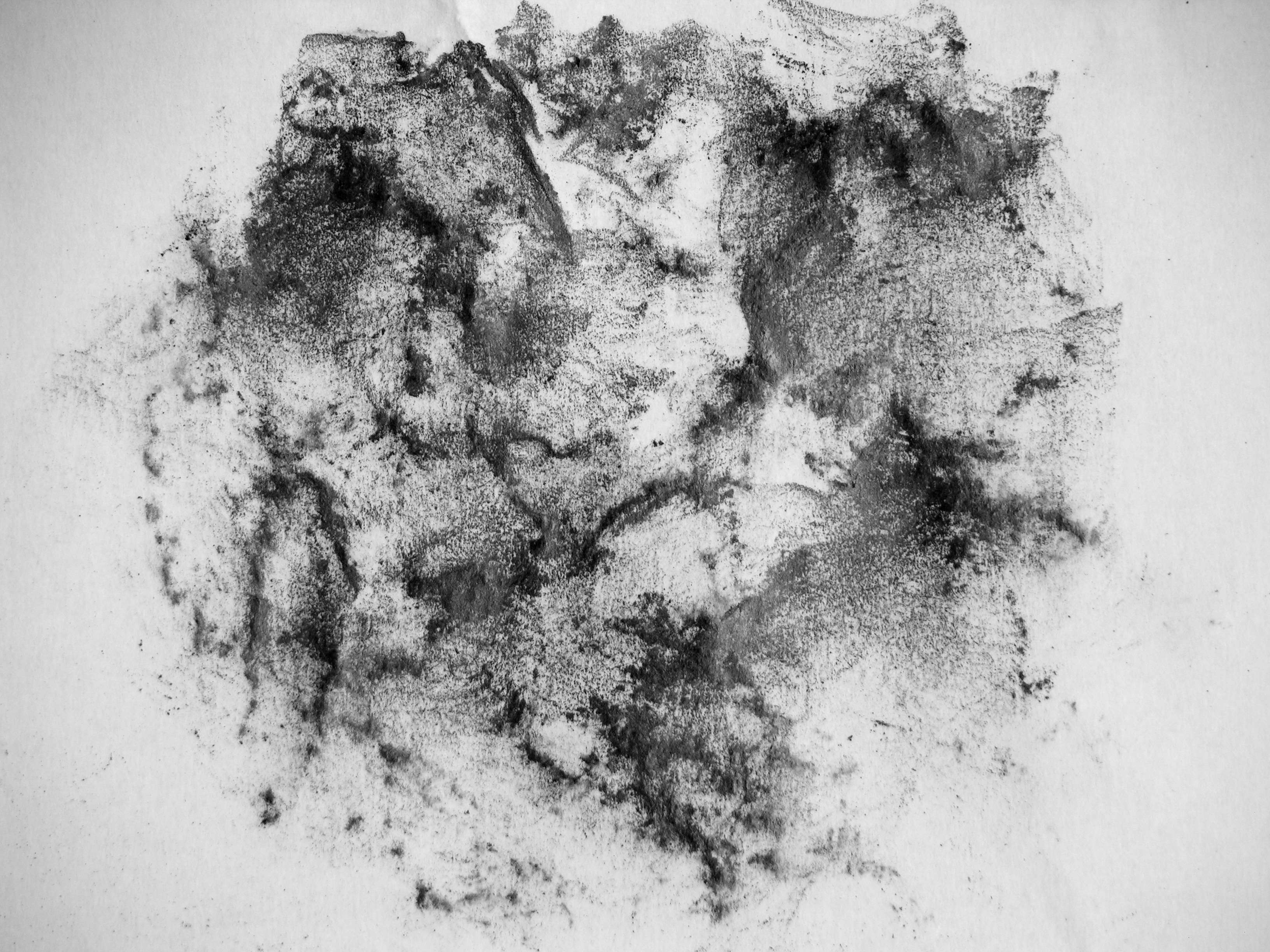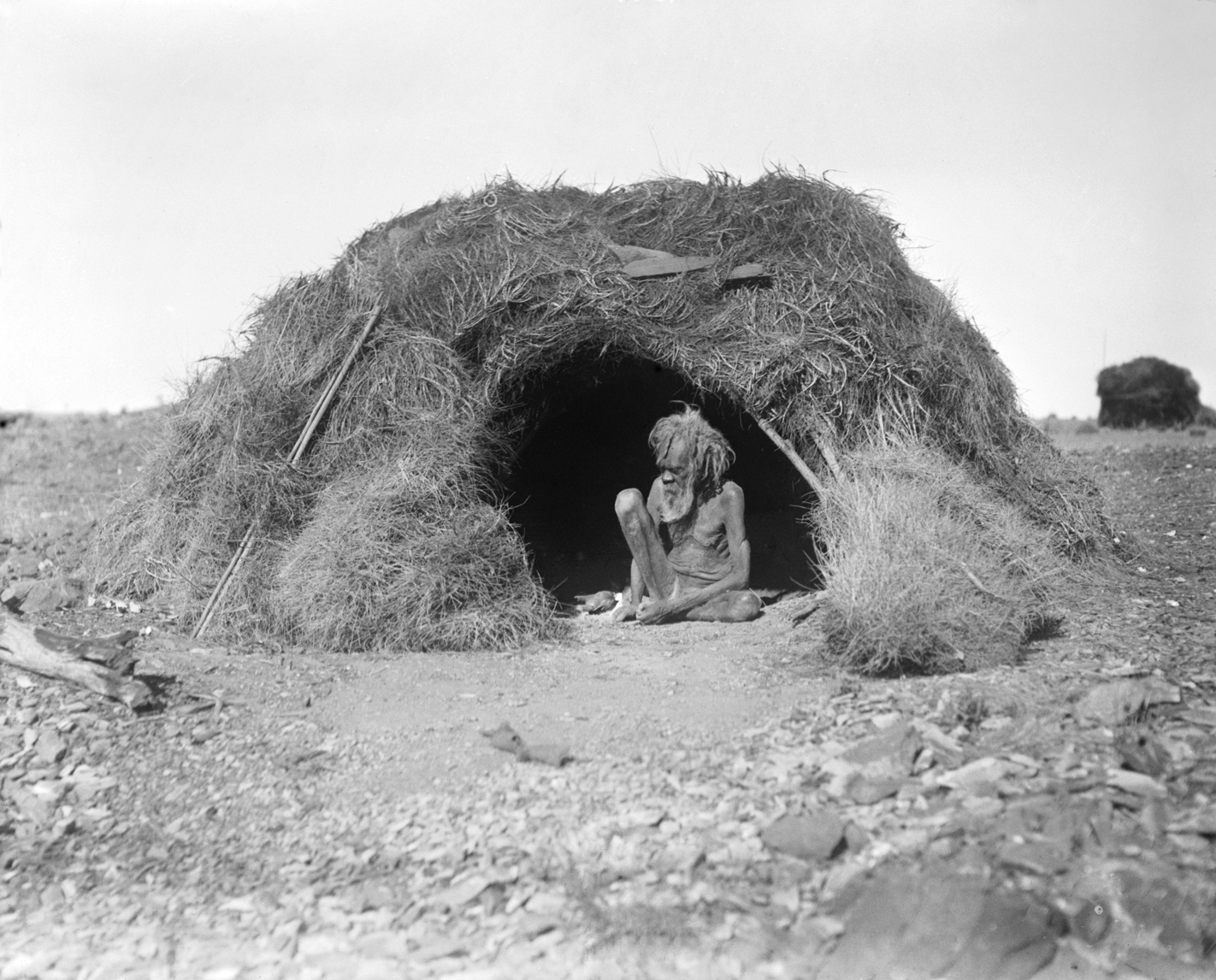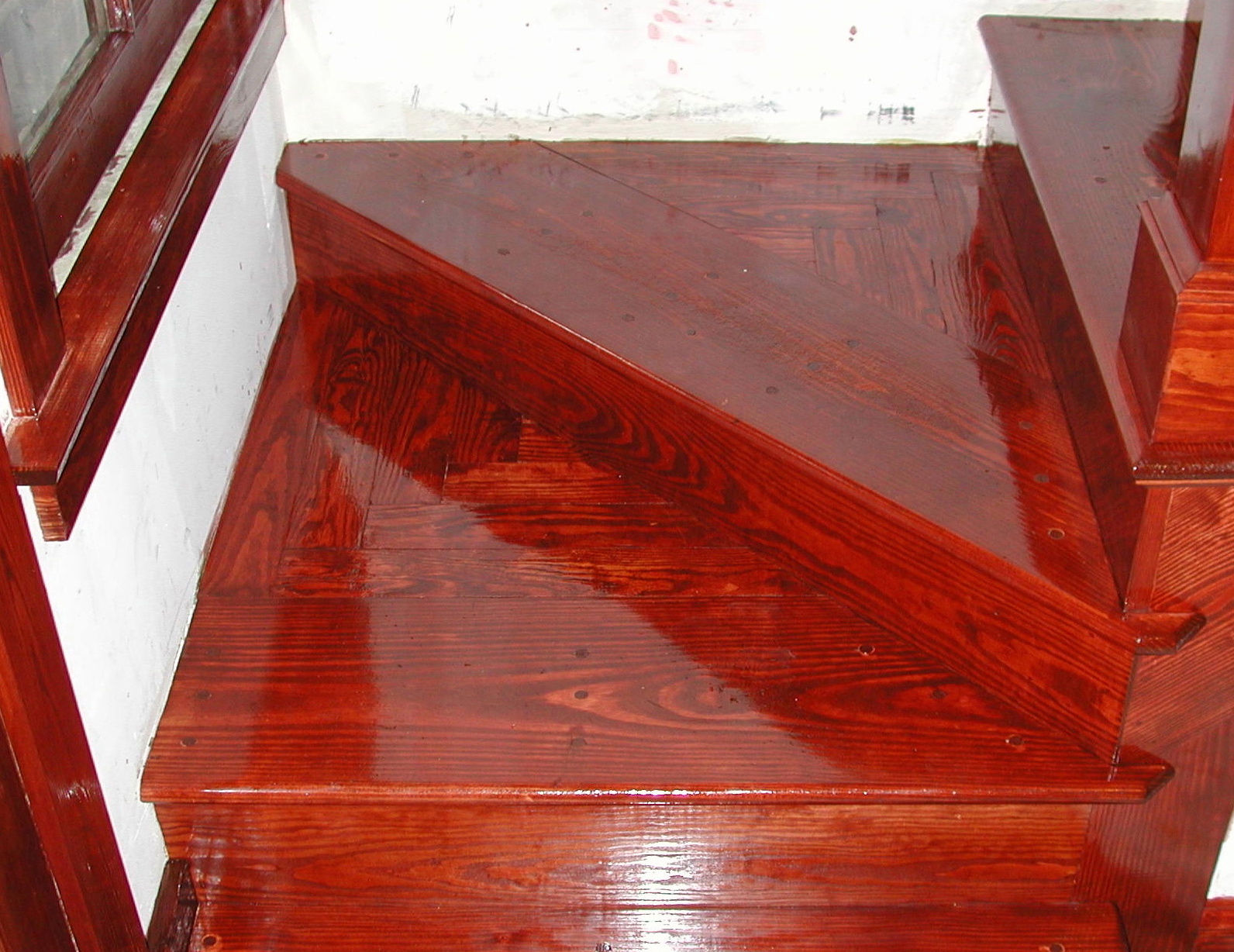|
Fixative (drawing)
In art, in particular drawings in pastels, charcoal, chalk, and other dry media, a fixative is a kind of preserving agent applied over the top of the drawing to prevent crumbling, smudging, fading, and discolouring. In times gone by, natural substances such as diluted egg white were painted on, but today synthetic sprays are usually used. However some artists, such as the Aboriginal Australian artists at Warmun, Western Australia, use traditional substances, in this case gum gathered from local bloodwood trees. Fixative is similar to varnish, but there are some key differences. Varnish is often used to protect paintings from atmospheric moisture, sunlight and dust; it helps to protect from being scratched, and makes the colours brighter. Fixatives prevents smearing. Fixatives are usually made from casein, synthetic resin or glue Adhesive, also known as glue, cement, mucilage, or paste, is any non-metallic substance applied to one or both surfaces of two separate item ... [...More Info...] [...Related Items...] OR: [Wikipedia] [Google] [Baidu] |
Pastel
A pastel () is an art medium that consists of powdered pigment and a binder (material), binder. It can exist in a variety of forms, including a stick, a square, a pebble, and a pan of color, among other forms. The pigments used in pastels are similar to those used to produce some other colored visual arts media, such as oil paints; the binder is of a neutral hue and low colorfulness, saturation. The color effect of pastels is closer to the natural dry pigments than that of any other process. Pastels have been used by artists since the Renaissance, and gained considerable popularity in the 18th century, when a number of notable artists made pastel their primary medium. An artwork made using pastels is called a pastel (or a pastel drawing or pastel painting). ''Pastel'' used as a verb means to produce an artwork with pastels; as an adjective it means pale in color. Pastel media Pastel sticks or crayons consist of powdered pigment combined with a binder. The exact composition a ... [...More Info...] [...Related Items...] OR: [Wikipedia] [Google] [Baidu] |
Charcoal
Charcoal is a lightweight black carbon residue produced by strongly heating wood (or other animal and plant materials) in minimal oxygen to remove all water and volatile constituents. In the traditional version of this pyrolysis process, called charcoal burning, often by forming a charcoal kiln, the heat is supplied by burning part of the starting material itself, with a limited supply of oxygen. The material can also be heated in a closed retort. Modern charcoal briquettes used for outdoor cooking may contain many other additives, e.g. coal. The early history of wood charcoal production spans ancient times, rooted in the abundance of wood in various regions. The process typically involves stacking wood billets to form a conical pile, allowing air to enter through openings at the bottom, and igniting the pile gradually. Charcoal burners, skilled professionals tasked with managing the delicate operation, often lived in isolation to tend their wood piles . Throughout histo ... [...More Info...] [...Related Items...] OR: [Wikipedia] [Google] [Baidu] |
Chalk
Chalk is a soft, white, porous, sedimentary carbonate rock. It is a form of limestone composed of the mineral calcite and originally formed deep under the sea by the compression of microscopic plankton that had settled to the sea floor. Chalk is common throughout Western Europe, where deposits underlie parts of France, and steep cliffs are often seen where they meet the sea in places such as the Dover cliffs on the Kent coast of the English Channel. Chalk is mined for use in industry, such as for quicklime, bricks and builder's putty, and in agriculture, for raising pH in soils with high acidity. It is also used for " blackboard chalk" for writing and drawing on various types of surfaces, although these can also be manufactured from other carbonate-based minerals, or gypsum. Description Chalk is a fine-textured, earthy type of limestone distinguished by its light colour, softness, and high porosity. It is composed mostly of tiny fragments of the calcite shells or sk ... [...More Info...] [...Related Items...] OR: [Wikipedia] [Google] [Baidu] |
Preservative
A preservative is a substance or a chemical that is added to products such as food products, beverages, pharmaceutical drugs, paints, biological samples, cosmetics, wood, and many other products to prevent decomposition by microbial growth or by undesirable chemical changes. In general, preservation is implemented in two modes, chemical and physical. Chemical preservation entails adding chemical compounds to the product. Physical preservation entails processes such as refrigeration or drying.Erich Lück and Gert-Wolfhard von Rymon Lipinski "Foods, 3. Food Additives" in ''Ullmann's Encyclopedia of Industrial Chemistry'', 2002, Wiley-VCH, Weinheim. Preservative food additives reduce the risk of foodborne infections, decrease microbial spoilage, and preserve fresh attributes and nutritional quality. Some physical techniques for food preservation include dehydration, UV-C radiation, freeze-drying, and refrigeration. Chemical preservation and physical preservation techniques ... [...More Info...] [...Related Items...] OR: [Wikipedia] [Google] [Baidu] |
Egg White
Egg white is the clear liquid (also called the albumen or the glair/glaire) contained within an egg. In chickens, it is formed from the layers of secretions of the anterior section of the hen's oviduct during the passage of the egg. It forms around fertilized or unfertilized egg yolks. The primary natural purpose of egg white is to protect the yolk and provide additional nutrition for the growth of the embryo (when fertilized). Egg white consists primarily of about 90% water into which about 10% proteins (including albumins, mucoproteins, and globulins) are dissolved. Unlike the yolk, which is high in lipids (fats), egg white contains almost no fat, and carbohydrate content is less than 1%. Egg whites contain about 56% of the protein in the egg. Egg white has many uses in food (e.g. meringue, mousse) as well as many other uses (e.g. in the preparation of vaccines such as those for influenza). Composition Egg white makes up around two-thirds of a chicken egg by weight. ... [...More Info...] [...Related Items...] OR: [Wikipedia] [Google] [Baidu] |
Aboriginal Australian
Aboriginal Australians are the various indigenous peoples of the Australian mainland and many of its islands, excluding the ethnically distinct people of the Torres Strait Islands. Humans first migrated to Australia 50,000 to 65,000 years ago, and over time formed as many as 500 language-based groups. In the past, Aboriginal people lived over large sections of the continental shelf. They were isolated on many of the smaller offshore islands and Tasmania when the land was inundated at the start of the Holocene inter-glacial period, about 11,700 years ago. Despite this, Aboriginal people maintained extensive networks within the continent and certain groups maintained relationships with Torres Strait Islanders and the Makassar people of modern-day Indonesia. Over the millennia, Aboriginal people developed complex trade networks, inter-cultural relationships, law and religions, which make up some of the oldest, and possibly ''the'' oldest, continuous cultures in the world ... [...More Info...] [...Related Items...] OR: [Wikipedia] [Google] [Baidu] |
Warmun Community, Western Australia
Warmun (also known as Turkey Creek or Warmun Community) is a township and locality in the Kimberley region of Western Australia, located on the Great Northern Highway, northeast of Perth, Western Australia. The closest populated town is Halls Creek, about to the south. It is about south of Kununurra. Turkey Creek is a small creek that runs through the community. History The Gija people are the traditional owners of the area, having inhabited it for thousands of years. Its name in Gija language is Warrmarn. The area was settled by European pastoralists in the 19th century but the community was established in 1901 when the state government built a ration depot at Turkey Creek. Mistake Creek massacre In March 1915, Michael Rhatigan, a telegraph linesman based at Turkey Creek, together with his two Aboriginal employees, Joe Wynne and Nipper, shot dead twelve Gija people at Mistake Creek in the East Kimberley, in an incident which became known as the Mistake Creek massa ... [...More Info...] [...Related Items...] OR: [Wikipedia] [Google] [Baidu] |
Western Australia
Western Australia (WA) is the westernmost state of Australia. It is bounded by the Indian Ocean to the north and west, the Southern Ocean to the south, the Northern Territory to the north-east, and South Australia to the south-east. Western Australia is Australia's largest state, with a land area of , and is also the List of country subdivisions by area, second-largest subdivision of any country on Earth. Western Australia has a diverse range of climates, including tropical conditions in the Kimberley (Western Australia), Kimberley, deserts in the interior (including the Great Sandy Desert, Little Sandy Desert, Gibson Desert, and Great Victoria Desert) and a Mediterranean climate on the south-west and southern coastal areas. the state has 2.965 million inhabitants—10.9 percent of the national total. Over 90 percent of the state's population live in the South-West Land Division, south-west corner and around 80 percent live in the state capital Perth, leaving the remainder ... [...More Info...] [...Related Items...] OR: [Wikipedia] [Google] [Baidu] |
Corymbia
''Corymbia'', commonly known as bloodwoods, is a genus of about one hundred species of tree that, along with ''Eucalyptus'', '' Angophora'' and several smaller groups, are referred to as eucalypts. Until 1990, corymbias were included in the genus ''Eucalyptus'' and there is still considerable disagreement among botanists as to whether separating them is valid. As of January 2020, ''Corymbia'' is an accepted name at the Australian Plant Census. Description Eucalypts in the genus ''Corymbia'' are trees, sometimes mallee-like, that either have rough, fibrous or flaky bark, or smooth bark that is shed in small flakes or short strips. Young plants and coppice regrowth have leaves that differ from adult leaves. The adult leaves are arranged alternately (strictly disjunct opposite, but appearing alternate), with oil glands. The flower buds are arranged in groups on a branching peduncle, each branch usually with seven buds, but with the pedicels of differing lengths, so that the in ... [...More Info...] [...Related Items...] OR: [Wikipedia] [Google] [Baidu] |
Varnish
Varnish is a clear Transparency (optics), transparent hard protective coating or film. It is not to be confused with wood stain. It usually has a yellowish shade due to the manufacturing process and materials used, but it may also be pigmented as desired. It is sold commercially in various shades. Varnish is primarily used as a wood finishing, wood finish where, stained or not, the distinctive tones and grains in the wood are intended to be visible. Varnish finishes are naturally Gloss (material appearance), glossy, but satin/semi-gloss and flat sheens are available. History The word "varnish" comes from Mediaeval Latin ''vernix'', meaning odorous resin, perhaps derived from Middle Greek ''berōnikón'' or ''beroníkē'', meaning amber or amber-colored glass. A false etymology traces the word to the Greek ''Berenice'', the ancient name of modern Benghazi in Libya, where the first varnishes in the Mediterranean area were supposedly used and where resins from the trees of now-v ... [...More Info...] [...Related Items...] OR: [Wikipedia] [Google] [Baidu] |
Casein
Casein ( , from Latin ''caseus'' "cheese") is a family of related phosphoproteins (CSN1S1, αS1, aS2, CSN2, β, K-casein, κ) that are commonly found in mammalian milk, comprising about 80% of the proteins in cow's milk and between 20% and 60% of the proteins in breast milk, human milk. Sheep's milk, Sheep and cow milk have a higher casein content than other types of milk with human milk having a particularly low casein content. Casein is the primary emulsifier in milk, that is, it helps in mixing oils, fats, and water in milk. Casein has a wide variety of uses, from being a major component of cheese, to use as a food additive. The most common form of casein is sodium caseinate (historically called nutrose), which is a very efficient emulsifier. Casein is secreted into milk from mammary cells in the form of colloidal casein micelles, a type of biomolecular condensate. As a food source, casein supplies amino acids, carbohydrates, and two essential elements, calcium and phosphoru ... [...More Info...] [...Related Items...] OR: [Wikipedia] [Google] [Baidu] |







